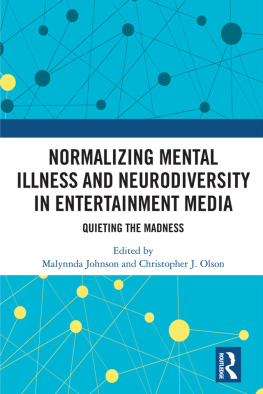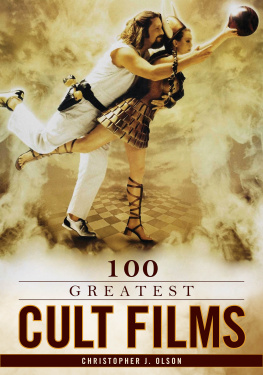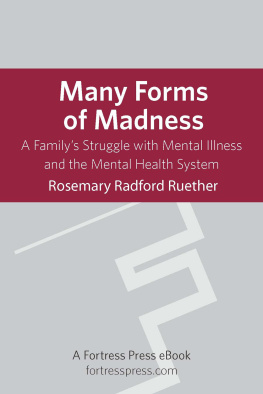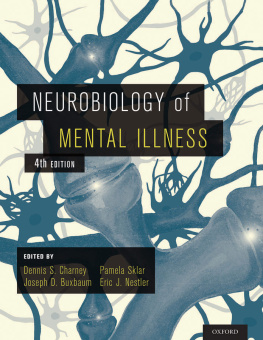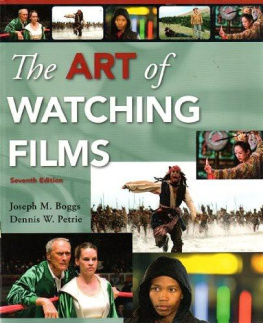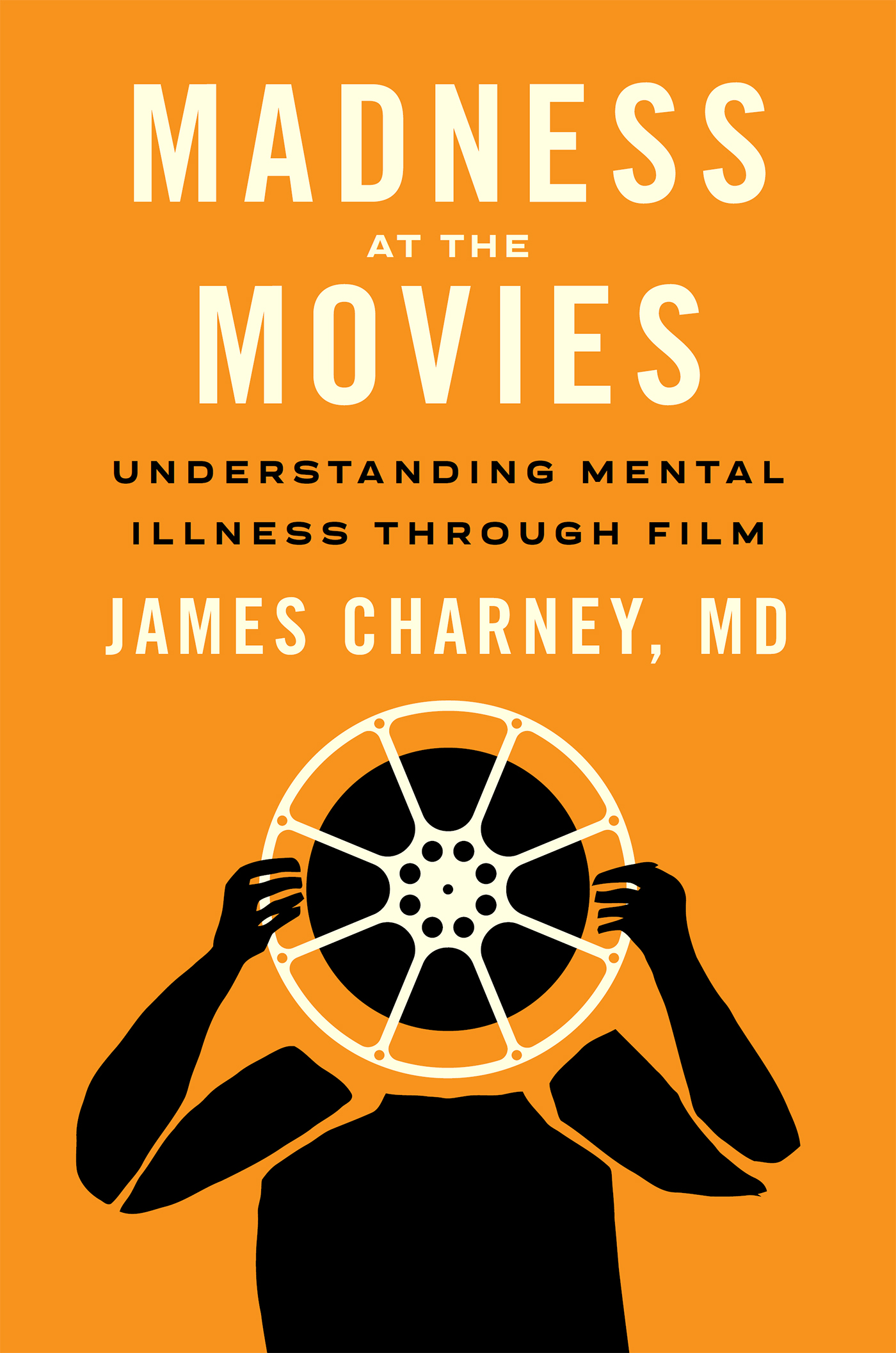Contents
Guide
MADNESS AT THE MOVIES
Madness at the Movies
Understanding Mental Illness through Film
James Charney, MD

Johns Hopkins University Press
Baltimore
2023 James Charney
All rights reserved. Published 2023
Printed in the United States of America on acid-free paper
9 8 7 6 5 4 3 2 1
Johns Hopkins University Press
2715 North Charles Street
Baltimore, Maryland 212184363
www.press.jhu.edu
All quotations from films are the authors own transcriptions made from watching a given film. The quotes are not taken from official versions of the screenplays, which often differ from the final films. Any errors are the authors own.
Library of Congress Cataloging-in-Publication Data is available.
ISBN 978-1-4214-4562-5 (pbk)
ISBN 978-1-4214-4563-2 (ebook)
A catalog record for this book is available from the British Library.
Special discounts are available for bulk purchases of this book. For more information, please contact Special Sales at .
For Noah
And for Eleonora and Izabella
from Greppen, with love
PREFACE: AN ORIGIN STORY
I grew up on Long Island, not far from New York City, loving movies. A child of the 1950s, I went to the movies almost every week, first with my parents and then on my own or with friends. My mother loved musicals and dramas; my dad wasnt interested at all. I took after my mother. I loved the entire experience of going to the movies. Our local cinema was not very special, but it was magical to me. No matter what the feature film, there were cartoons, nature films, newsreels, and coming attractions. Sometimes the coming attractions were the best part of the showeven mediocre movies looked good in a coming attraction short.
I loved the horror films, even though they gave me nightmares. I still get the shivers thinking about Them!, a movie about giant radioactive ants created by atom bomb tests (lots of 1950s horror films reflected the anxieties and paranoia of the Cold War, but as a kid I didnt know about any of thatthey were just very scary movies, and I loved them). Years later I watched Them! again and I was pleased to see how well made it was. So many of those B horror movies were just bad; if I was going to be terrified by a scary movie, at least I had chosen a good one!
Ive written elsewhere about why we like horror movies (see Recommended Reading at the end of this chapter). Its still something of a puzzle. As a kid, I would often watch them from behind my hand, fingers spread just enough for me to peek at the screen. One time when I was nine, my mother was delayed picking me up from the theater, so I stayed and watched The Creature from the Black Lagoon a second time. Boy, was that a mistake! I had bad dreams for weeks. But still I went back.
Sometimes as a family we would go to roadshow presentations. You bought your ticket in advance for those. They were a luxury: a ticket for a roadshow presentation cost $2.50 when an ordinary double feature cost 35 cents. Unlike most films that ran continuously, these had a firm starting time, and because they were long epics, they even had intermissions, like a live play. Some had glossy programs. We saw The Ten Commandments, Around the World in Eighty Days, and This Is Cinerama with its wraparound screen. We went to fancy movie houses in New York City, like Radio City Music Hall and the Roxy Theater, for some of these shows. They were special outings that remain happy memories.
HOW I LEARNED TO LOVE CLASSIC MOVIES
I went to college at Columbia University, where I was able to take what I believe was the first history of film class at the school. This was years before there was anything like a film studies major, much less a department of film studies. There, I saw silent films for the first time, and black-and-white films from the 1930s and 1940s that blew me away, like the sophisticated comedies of Ernst Lubitsch: Ninotchka with Greta Garbo and The Shop Around the Corner with Jimmy Stewart and Margaret Sullavan. I loved Howard Hawkss fast-talking screwball comedies, like Twentieth Century with John Barrymore and Carole Lombard and Bringing Up Baby with Cary Grant and Katharine Hepburn.
I had never seen a Marx Brothers movie until I took that class. I couldnt imagine how they allowed such comic anarchy in the movies, but they did, and it was wonderful. My favorite was Duck Soup. I loved Groucho with his leering slouch and quick wit.
Casablanca became my favorite film, a wartime love story for the ages, with a tough and sentimental Humphrey Bogart and a beyond beautiful Ingrid Bergman. I wanted to be Bogart. I had a poster of him in my room and memorized much of his dialogue. Heres looking at you, kid and This could be the start of a beautiful friendship may not mean anything if you havent seen the movie (see it!), but if you have, they will instantly transport you.
I also saw films from other countries for the first time. The showing of foreign films was becoming more common during my college years; before that, it was rare to watch a film with subtitles (its still rare today in the States, though with streaming services it is becoming more popular). My friends and I discovered the films of Ingmar Bergman, such as The Seventh Seal and Persona, Federico Fellini with his La Dolce Vita and 8 1/2, and Akira Kurosawas Rashomon and The Seven Samurai. Later, we reveled in the independent films of Cassavetes and the wonderful weirdness of Buuel and developed a new appreciation for the work of Orson Welles. His Citizen Kane (1941) has been called the greatest film ever made. It remains amazingly fresh and revolutionary even today.
In the late 1960s and early 1970s American filmmakers like Francis Ford Coppola, Steven Spielberg, and Martin Scorsese came into their own, making films of power and creative energy. Many of them were influenced by the freedom and originality of films from abroad. It was a golden time to love the movies.
During my college days, in the mid-1960s, if you didnt get to see an older film in a class, you had only one other option. There were no such things as VHS tapes or DVDs and certainly nothing like the streaming services we have today. The Thalia was a run-down theater on the Upper West Side that showed classic movies, one of a few such theaters in New York. It presented smartly put-together double features, which would be shown for a few days at a time. You were at the mercy of whoever made the choices, but if they were showing a movie you wanted to see and you were an enthusiast like me, you made a beeline there, no matter what. It was at the Thalia that I first saw Dinner at Eight and Grand Hotel, two MGM extravaganzas with big stars of the 1930s, and many of the other Marx Brothers films I loved.
I had become the very definition of an amateur: a lover and appreciator of movies. One who had begun to learn how to read them, to understand how they worked. I subscribed to Variety, the professional journal for plays and films, and imagined I would write for them some day. I loved Varietys slangy style (with headlines like the famous 1935 Stix Nix Hick Pix; that is, Farmers Dont Like Farm Pictures). I can remember a time I stood outside the Variety office in New York and simply couldnt bring myself to enter. I didnt have confidence that I was a good enough writer, and I didnt have the nerve to put it to the test.


